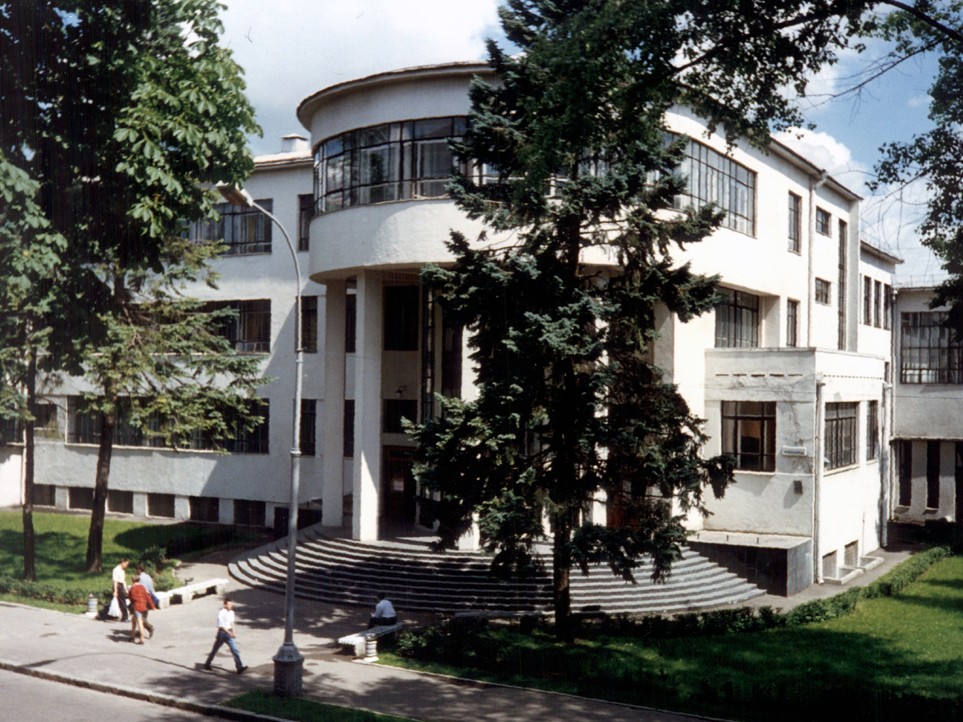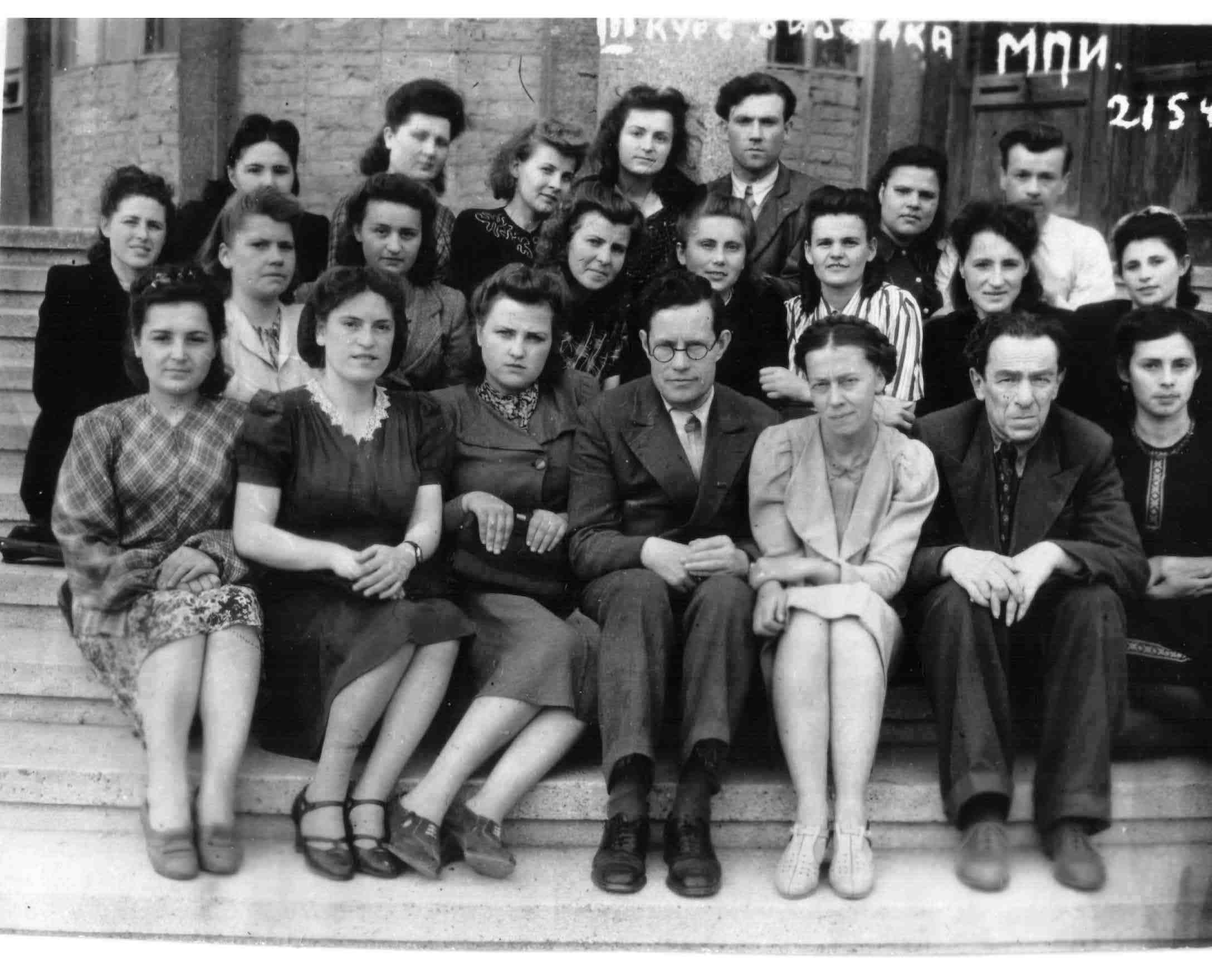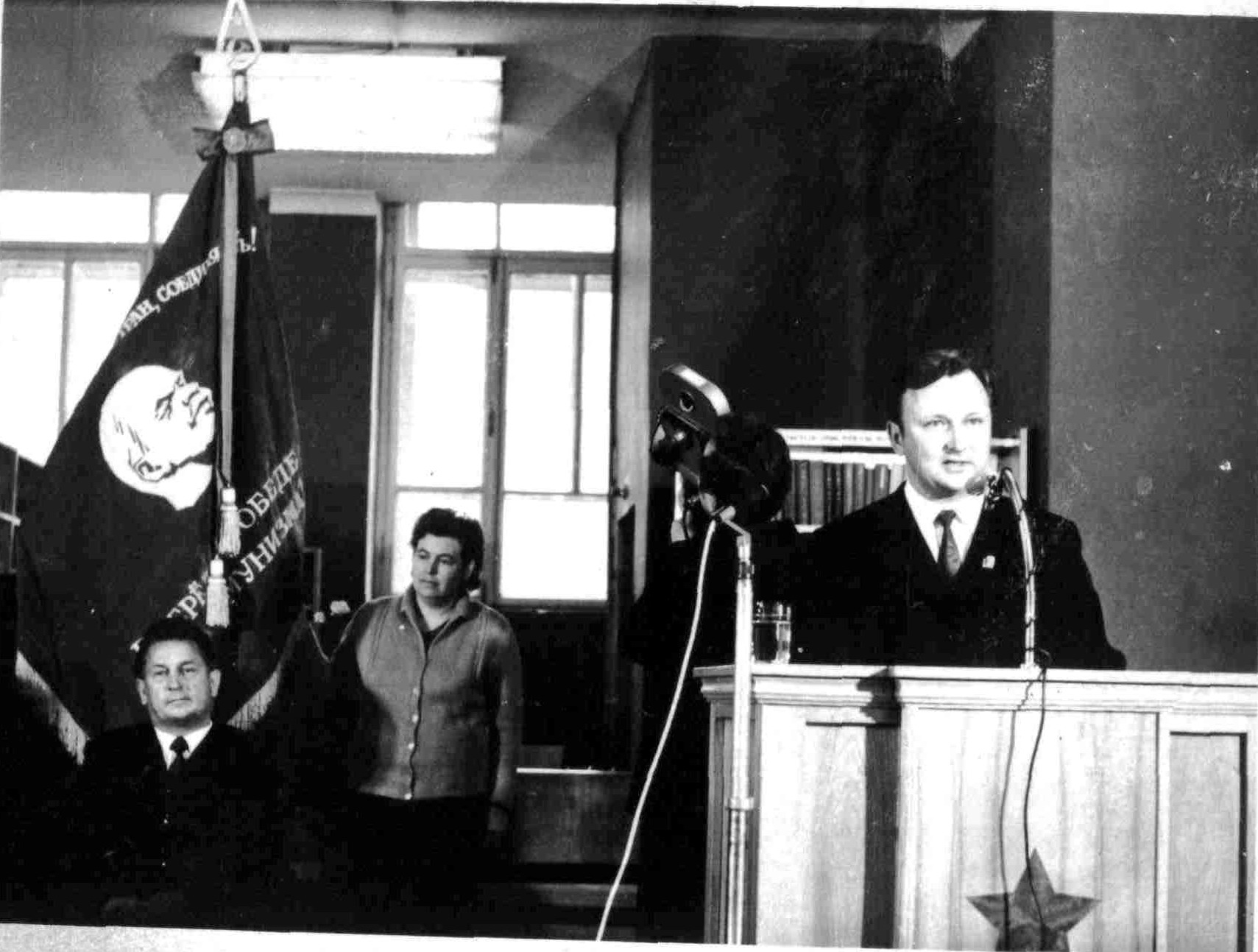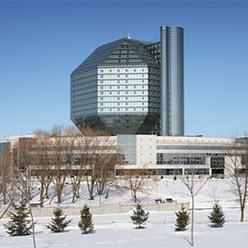The development of the Library in 1948–1991
After the war, on September 4th, 1950, the BSSR Consul of Ministers committee for cultural and educative institutions adopted the Decree "On the state and improvement of the BSSR State Library named after V.I. Lenin operation". The Decree defined the Library’s tasks: interlibrary loan support; scientific, methodological, and bibliographic work; bibliographic service and the central state book depository. Thus, the role of the library was emphasized as one of the components designed to ensure the social and cultural development of the state and society.
The library continued to fulfil its main functions. From year to year the Library extended its activities and duties and developed its information resources and research work. The Library exerted a profound influence on Belarusian society and economy, science and culture. As usual, the main task of the Library was the development of a universal collection, and first of all collection of Belarusian national book heritage. Over the years, a great work has been done on completing the pre-war national funds, and systematic current acquisition has not ceased. Besides the complete collection of publications issued in the USSR, the Library held the collection of foreign scientific materials. In 1956 the Library became one of the United Nations deposit libraries, it got access to the full array of documents of this organization and its specialized structures.

|
| The Library main building |
The Library was the biggest republican bibliographic center. It performed registration of Belarusian national press and issued "Chronicles of Belarusian Press" until 1977 when the Book Chamber was separated from the Library. A particular attention was paid to the development of recommendatory bibliography. The Library reference and bibliographic department was re-organized into the scientific and bibliographic department which performed the duties of a recommendatory bibliography center. In 1962 the Republican conference of librarians on monitoring of the BSSR bibliographic activities adopted a statute that defined the Library as a republican and methodological center of bibliography and humanities. In order to promptly satisfy the readers' information requests, the library organized the publication of a whole system of current bibliographic indexes: recommendatory bulletin «New Books», reference books «Social Studies», «New literature on the History», «New Literature on Culture and Art», «Automated Library Systems», and others. Besides that, the Library issued fundamental scientific and methodological reference books: «Books of Belarus, 1517–1917. Union Catalogue» (1986); «Soviet Belarus Fiction, 1917–1960» (1962); «Belarusian Soviet Dramatic Art, 1917–1965» (1967); «Belarusian History Bibliography: Feudalism and Capitalism» (1969); «Books in Russian Language Concerning Belarus Issued before the October Revolution, 1768–1917» (1976); «The BSSR Musical Literature» (1976, 1977); «The BSSR during the Great Patriotic War 1941–1945» (1980, 1990), and others.

|
| The oldest librarians |
In 1976 the Library became the Belarusian republican center of culture and art. In the Library was founded the scientific department of culture and art, the main tasks of which were the formation of a reference and information fund of materials and differentiated information services for state bodies and institutions in the field of culture. The department’s subscribers were the Ministry of Culture of the BSSR, the Department of Culture of the Central Committee of the Communist Party of Belarus, the Department of Culture of the regional executive committees. The State Library headed the BSSR information centers system which was found on the basis of Belarusian district libraries in 1977. The Library started issuing publications on culture: «Chronicles of the BSSR Cultural Life», «Information on the Issues of Culture and Art», and a full text collection of the BSSR Ministry of Culture documents.
The State Library continued its work as the main scientific and methodological center, which monitors the main activities of the republic’s libraries: the formation of funds, information and reference and bibliographic services for visitors, library services for children. In 1974 the Library became a coordinating center on the BSR libraries centralization. The Library’s activities, such as coordination of the BSSR libraries, implementation of innovations, improving user service, and development of library education, favored Belarusian library science. The Library studied user interests and needs, cooperated with publishing houses and developed the BSSR book-publishing. Thanks to these activities Belarusian libraries were considered to be the best libraries of the USSR.
In 1974 in the Library was organized library science department. The Library became the major Belarusian centrer of library science. The Library coordinated research work in the biggest Belarusian libraries and the Library department of Minsk Pedagogical Institute, were implementing drawing up of consolidated long-term plans for scientific research work and control over their execution, development of research methodology and recommendations for their introduction into the practice of libraries.

|
| The first graduates of the library department (1947) |
The State Library initiated the higher library education in the BSSR. As early as in 1923 Joseph Simanovsky developed a plan of library courses, but the People’s Commissariat of Education of BSSR didn’t approve this suggestion. This idea was realized only in the 1930s. In 1934–1936, the two-year higher library courses and the post-graduate study (existed until 1937) were organized in the Library. After the World War II in Minsk Pedagogical Institute was organized the Library department headed by Joseph Simanovsky.
In 1972 the State Library of Belarus celebrated its 50th anniversary. On this occasion the Library was awarded with the Order of the Red Banner of Labor, the USSR highest prize. This award made evident that the State Library of the BSSR performed its functions at a high level and took the place of one of the most important social institutions.
Due to the growth of the Library collections and the number of users, the Library needed free spaces. In 1958-1962 in Kirova Street were built additional premises where was located a book depository. However, in 15 years it was filled up. The library had to keep its book collections in different premises in Minsk and Minsk district. The Library obviously needed a new building.

|
| The Red Banner of Labor award (1972) |
In 1989 the BSSR Council of Ministers organized a contest of the best architectural project of the Library new building. The project by architects M.K. Vinogradov and V.V. Kramarenko won the contest. The architects developed an original composition which is named today as «The Belarusian Diamond». The building should have been started in the early 1990s, but this project was realized only in ten years.


